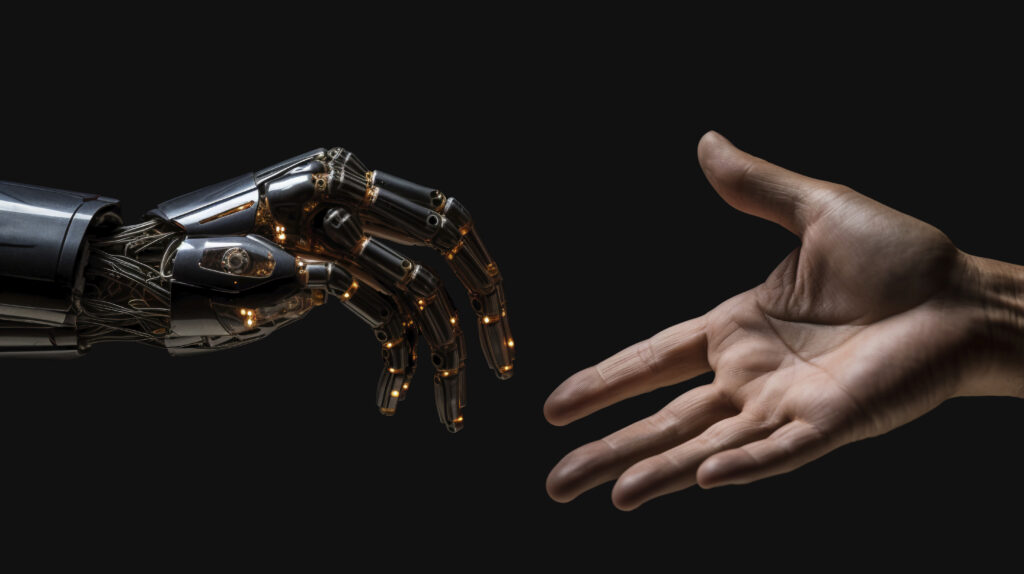
Will AI Take Over Digital Marketing and Graphic Design?
The rapid growth of artificial intelligence (AI) in recent years has impacted many creative fields, with digital marketing and graphic design among the most affected. As AI tools become more sophisticated, there is growing debate over whether AI could one day take over these fields entirely. While AI technology has revolutionized how we approach digital marketing and graphic design, it’s important to understand both its capabilities and limitations. This article explores the impact of AI in these fields and addresses the question of whether AI will ever fully replace human professionals.
AI’s Role in Digital Marketing
AI is transforming digital marketing by streamlining workflows, providing personalized customer experiences, and optimizing performance across channels. Here’s a look at some of the ways AI is reshaping the industry:
- Personalization at Scale
AI allows marketers to deliver highly personalized experiences by analyzing user behavior and preferences. Tools powered by AI can segment audiences, tailor ad targeting, and even curate content based on user data. This helps brands foster stronger connections with customers, as messages become more relevant and timely. - Automated Content Creation and Management
AI-driven tools like chatbots, content generators, and scheduling software enable marketers to create and distribute content more efficiently. These tools handle repetitive tasks, like social media posting or responding to FAQs, freeing up time for marketers to focus on strategy and creativity. - SEO Optimization
AI has significantly impacted SEO, with tools like predictive analytics, keyword analysis, and performance forecasting helping websites rank higher on search engines. Marketers use AI to gather insights that inform content strategy, making it easier to optimize for search and anticipate algorithm changes. - Enhanced Data Analytics
Data-driven insights are crucial to successful digital marketing, and AI provides powerful analytics tools to extract meaningful patterns from complex data. Marketers can use AI to understand customer journeys, assess ad performance, and refine campaigns in real time, leading to more effective results.
AI’s Influence on Graphic Design
In the world of graphic design, AI is beginning to assist with tasks that traditionally required human skill and creativity. Here are some of the main ways AI is impacting design work:
- Automated Design Tools
AI-powered design tools like Canva, Adobe Sensei, and others allow users to quickly create visuals, even without extensive design knowledge. These tools provide templates, automatic image editing, and even suggest design elements to make the creation process faster and more accessible. - Generative Design and Concept Exploration
AI can generate multiple design variations based on input criteria, allowing designers to explore more options in less time. Generative design algorithms use user-specified guidelines (like color, style, or theme) to produce a range of designs, giving designers a broader canvas to work with. - Image Recognition and Editing
AI in image editing can automatically detect and modify objects, adjust backgrounds, and improve resolution. This can simplify retouching and editing tasks, enabling designers to focus on more complex and creative aspects of their work. - Logo and Branding Automation
AI-driven platforms can generate logos and branding materials based on brand information, color preferences, and style selections. While these tools offer quick solutions for smaller projects, they often lack the uniqueness and conceptual depth that a human designer provides.
The Limitations of AI in Digital Marketing and Graphic Design
While AI has introduced powerful tools for both marketers and designers, it comes with notable limitations:
- Lack of Creativity and Originality: AI can follow rules and patterns, but it struggles with originality. Human designers and marketers can tap into emotional intelligence, cultural understanding, and creative thinking that AI currently cannot replicate.
- Nuanced Decision-Making: Human marketers excel at understanding the subtleties of brand identity and customer psychology, which is essential for building successful campaigns. AI’s data-driven approach lacks this human intuition and can sometimes lead to impersonal results.
- Reliance on Quality Data: AI’s effectiveness depends on the quality and relevance of the data it processes. Poor data leads to poor insights, which is why human oversight is essential in ensuring that data-driven strategies are accurate and aligned with a brand’s goals.
The Future of AI in Digital Marketing and Graphic Design: A Hybrid Approach
Rather than fully taking over these fields, AI is more likely to become an invaluable tool that supports human creativity. This hybrid approach, where AI handles repetitive tasks and data-heavy analysis, allows professionals to focus on strategy, innovation, and creativity.
- Enhanced Efficiency
With AI handling data analysis, customer segmentation, and basic content creation, digital marketers and graphic designers can work faster and smarter. They can spend more time refining their campaigns and crafting unique, impactful designs. - Augmented Creativity
AI-driven tools can offer ideas, recommendations, and data-backed insights that help inspire new creative directions. Marketers and designers will be able to draw from AI’s suggestions to create work that resonates on a deeper, more personal level. - Better Customer Experiences
By working with AI, digital marketers can create personalized, consistent, and engaging experiences across platforms. Meanwhile, designers can leverage AI tools to improve visuals and deliver more cohesive branding.
Final Thoughts
AI is undoubtedly changing the way digital marketing and graphic design operate, offering a mix of automation and insight that drives efficiency and creativity. However, while AI can streamline processes and aid in data analysis, it lacks the creativity, emotional intelligence, and critical thinking that human professionals bring to these fields. In the end, the most successful strategies and designs will likely emerge from a balance between AI-driven insights and human ingenuity. Rather than fearing an AI takeover, marketers and designers can harness AI as a tool that enhances their work, driving innovation in an ever-evolving digital landscape.